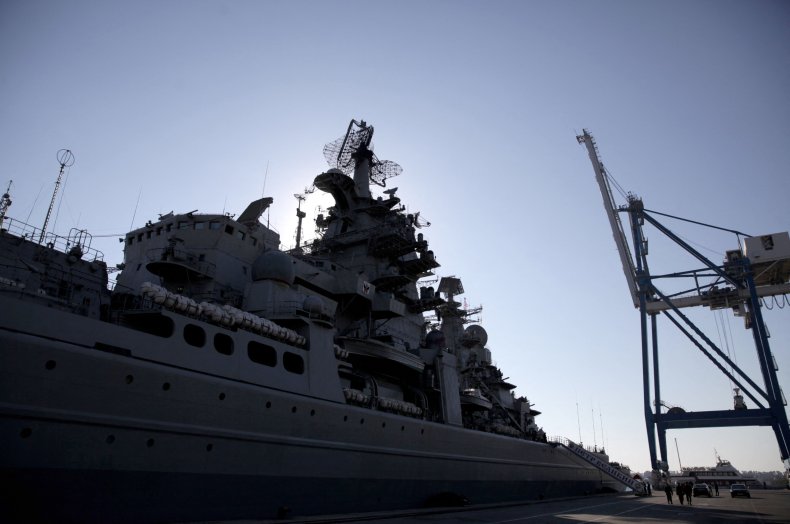Russia to Scrap World's Largest Nuclear-Powered Warship Amid Mounting Costs
Russia might be forced to send the flagship battlecruiser Pyotr Velikiy—the largest nuclear-powered military vessel in the world—to the scrapyard, as the cost of maintenance and modernization is deemed too high, state media agency TASS reported this week.
The decision is the latest in a series of moves by Moscow to revamp its struggling navy, including the ailing aircraft carrier Admiral Kuznetsov, which has been plagued by issues and caught fire a number of times.
The navy has played an integral part in Russia's war in Ukraine since its invasion on February 24, 2022, which has also exposed its weaknesses, culminating in the sinking of its flagship Moskva cruiser in April 2022.
While no official announcement has been made, the Pyotr Velikiy (which is translated as Peter the Great), the only combat surface nuclear-powered ship in the Russian navy, is expected to be replaced by another cruiser, the Admiral Nakhimov, which is undergoing repairs and modernization, and should be handed over to the fleet in 2024, TASS reported, citing a source in the naval forces.

"At the moment they are working out the logistics of removing Pyotr Velikiy from the Russian navy. It appears that the experience of repairing and modernization of similar-classed Admiral Nakhimov has shown that the process is too costly," the source said.
Last August, the Pyotr Velikiy was deployed during Russia's naval exercises in the Arctic, shown on video firing a cruise missile in the Arctic Sea in what was seen as a show of force.
"As part of a planned exercise with a grouping of heterogeneous strike forces of the Northern Fleet taking place in the waters of the Barents Sea, the flagship of the Northern Fleet—the Pyotr Velikiy heavy nuclear missile cruiser (TARKR)—launched a Granit cruise missile at a target position in the Novaya Zemlya archipelago," the Russian Ministry of Defense said at the time.
"Earlier, the Pyotr Velikiy TARKR, in cooperation with the Admiral Ushakov destroyer, conducted practical anti-aircraft missile and artillery firing at air targets. The area of the Barents Sea, where rocket firing was carried out, was closed in advance for civil navigation and aviation flights."
The Soviet-era Kirov-class heavy nuclear missile battlecruiser was laid down in 1986 but not launched until 1996. Its original name, Yuri Andropov (named for the Communist Party general secretary), was changed following the collapse of the Soviet Union at the end of 1991.
The Pyotr Velikiy has a displacement of 24,300 tons (standard) and 28,000 tons (full load), and measures 252 meters (827 feet) in length and 28.5 meters (94 feet) in beam. It carries an impressive array of weapons, including 20 P-700 Granit (SS-N-19 Shipwreck) anti-ship missiles, 64 3K95 Kinzhal surface-to-air missiles, 48 S-300FM Fort-M surface-to-air missiles and six Kashtan (CADS-N-1) point defense gun/missile systems.
In February, Russia decommissioned another major vessel, the nuclear-powered strategic submarine Dmitry Donskoy, which was the largest nuclear sub in the world. The moved followed months of speculation about the fate of the ageing submarine, though state media was reporting as late as 2021 that it would stay in service at least until 2026.
Newsweek reached out to the Russian Ministry of Defense via email for comment.








